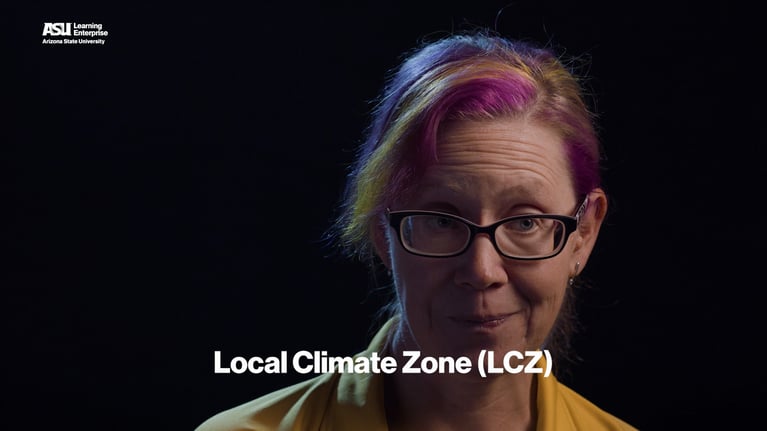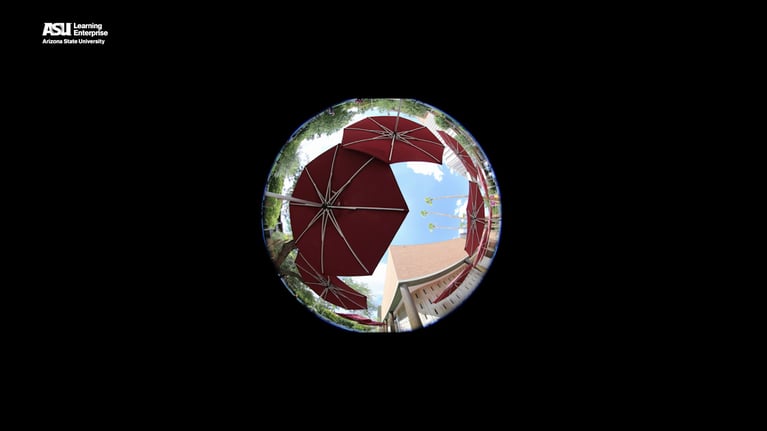ASU Learning Sparks
The Role of Urban Climate Informatics in Shaping Livable Cities
Humans are natural climate sensors, but individual perceptions vary. Urban Climate Informatics (UCI) combines human perception with data to understand climate. UCI leverages advancements in sensing technologies, non-traditional datasets, crowdsourcing, big data, digital infrastructure, advanced analytics, and artificial intelligence. It takes advantage of four technological trends: advances in sensors, novel datasets, improved digital infrastructure, and leading-edge analytical algorithms and platforms. IoT sensors and unconventional data sources, like car temperature sensors and street view images, provide high-resolution climate data. Advanced algorithms and cloud computing platforms transform how data are stored, analyzed, and communicated, leading to the creation of Digital Twins–virtual city models. UCI is a paradigm shift in urban climate science, aiming to understand and respond to urban climate challenges, making cities more livable.
Urban climate science has long investigated the interactions between cities and the atmosphere. Various methods have been developed over the last century to document, examine, and model urban climate; the simplest is measuring air temperature with a thermometer. However, cities are complex, and conventional methods often can’t provide fine-scale data required for urban climate analyses.
Recent advancements in sensing technologies, coupled with growing computing power and modeling capabilities have produced novel, non-traditional datasets that can augment traditional data sources and provide unprecedented insights into atmospheric dynamics.
In this context, Urban Climate Informatics, short UCI, is an evolving research field. “UCI aims to explore and understand complex urban climate systems and human environment interactions through new technological, methodological, and systems thinking approaches. It embraces more integrated and human-centric methods to address urban climate challenges, enabled by novel sensing, non-traditional datasets, crowdsourcing, big data, digital infrastructure, advanced analytics, and artificial intelligence.”
UCI takes advantage of four technological trends: advances in sensors, novel datasets, improved digital infrastructure, and leading-edge analytical algorithms and platforms.
In recent years, meteorological sensors have become smaller, cheaper, and more energy efficient. Sensors are now aware of their location and can easily transmit data wirelessly and in real time through WiFi, 5G, and other technologies. IoT (Internet of Things) refers to the billions of electronic devices around the world that are not traditional computing devices but are connected to the Internet, all collecting and sharing data. Although not developed for urban climate data collection, those IoT sensors can answer urban climate questions. For example, smart watches and wearable fitness sensors collect data on your vitals – how about combining this information with heat maps to calculate your thermal exposure and study your body’s physiological response? In the future, humans will be sensors!
Similarly, urban climate datasets have emerged from other unconventional sources. For example, the air temperature sensor in your car was installed to measure the outdoor temperature as a reference for the car’s AC unit – but temperature observations from cars could be repurposed to generate high-resolution temperature maps of a city. Think about millions of vehicles live-streaming temperature data to a gigantic database!
Another example: Researchers used to organize street audits where people walked around neighborhoods to investigate traffic safety or the impact of trees on obesity. Street View images now enable researchers to automate those audits and make them more accessible, because people can participate from home. Street View images offer a great opportunity to extract information on the form and design of cities, and they provide a pedestrian perspective rather than the bird’s eye view from satellite imagery.
Most novel datasets are big data that require advanced algorithms and processing. In this context, Artificial Intelligence, Deep Learning, and Machine Learning have entered urban climate analytics. In addition, digital infrastructure and cloud computing platforms such as AWS have transformed how data are stored, analyzed, and communicated. We are getting closer to creating true Digital Twins–virtual city models that integrate data, real-time sensing, and predictive models of underlying atmospheric processes in real-time, interactive simulations.
UCI has led to a paradigm shift in urban climate that significantly changes “how” we do science and what we understand about the urban atmosphere. Cities are living, breathing ecosystems. UCI seeks to understand and respond to this complexity to achieve a more integrated and human-centric assessment of grand challenges of the Anthropocene, including climate change, urban overheating, poor air quality, and climate injustice. UCI will undoubtedly shape the urban climate research agenda for upcoming decades and positively impact fundamental, applied, and policy-relevant research.


